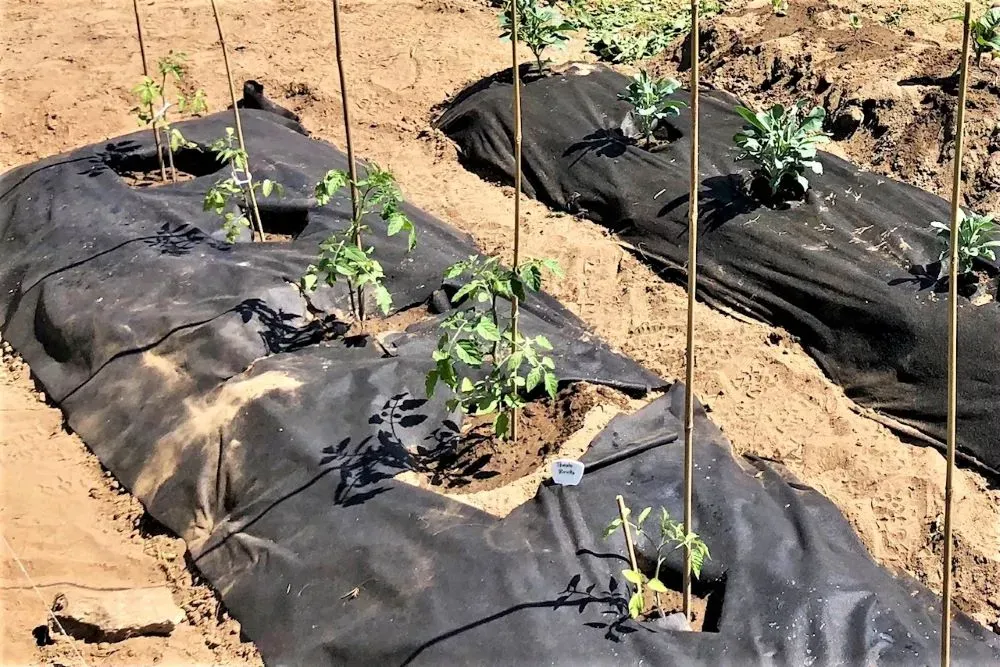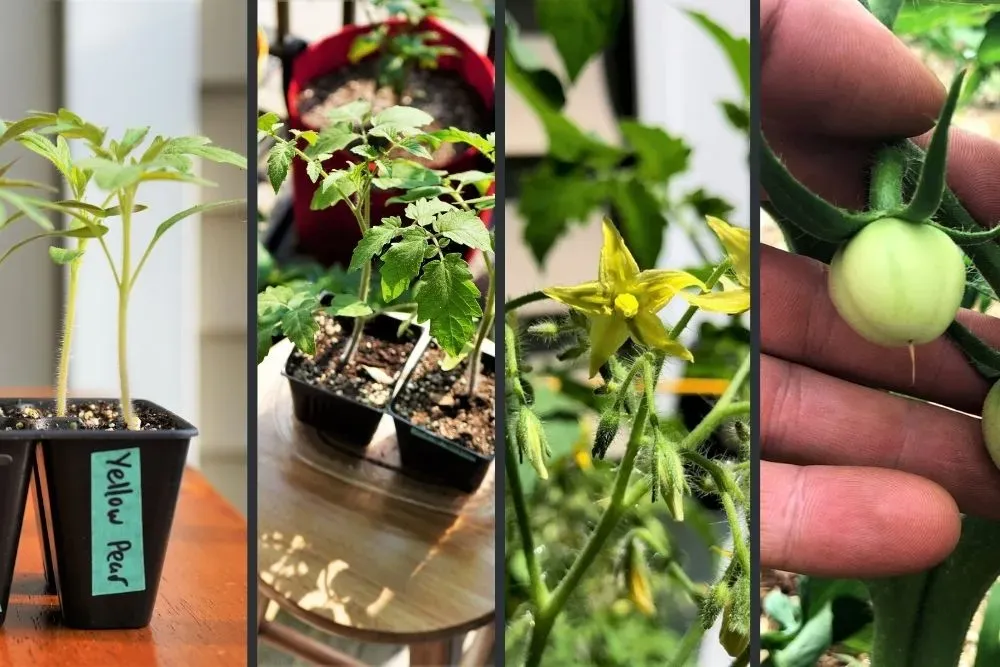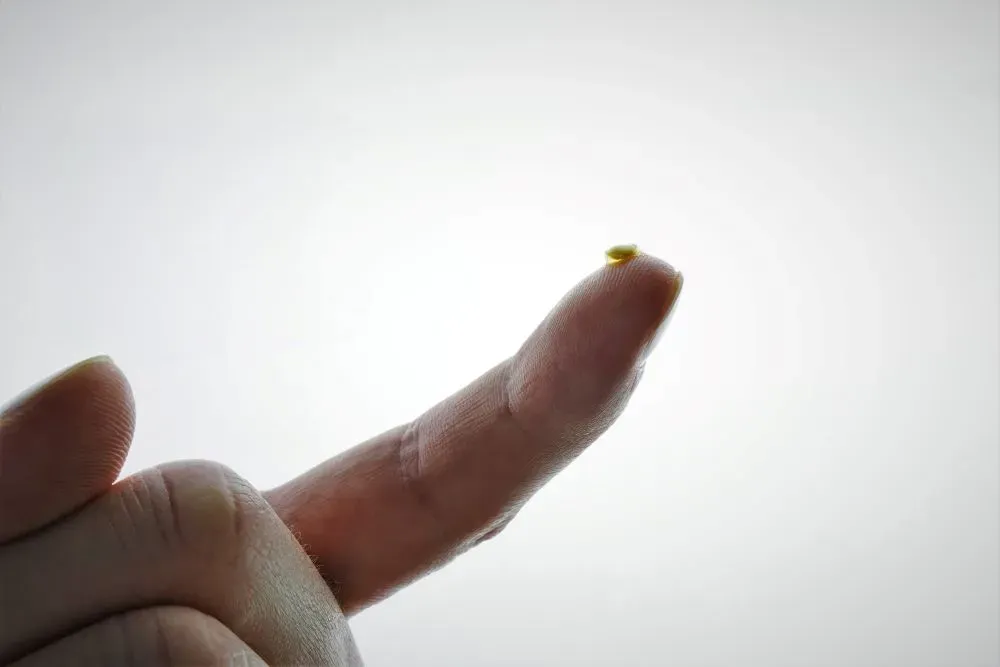Tomatoes are a popular home garden vegetable. It would be convenient if they regrew each year without replanting. Whether tomato plants regrow annually depends on the variety and climate.
In this article, I’ll discuss whether Tomato Plants Regrow Every Year. The answer depends on the variety being grown and the climate in which it is planted.
Quick Answer: Tomatoes can survive for multiple years in their natural tropical environment but cannot withstand freezing temperatures. When warm spring weather arrives, tomatoes can regrow from fallen seeds (volunteer plants) or be propagated from cuttings during autumn.
In This Article
Natural Climate of Tomatoes
Tomatoes are native to South and Central America, which makes them tropical plants and naturally perennial in these climates, living for multiple years before dying.
Tomatoes are not cold-hardy and are unable to withstand freezing temperatures. This means that tomato plants will die when the temperature drops below freezing. This can be a problem for many home gardeners as the first frost date approaches.
Why Does Freezing Weather Kill Plants?
Freezing weather kills plants because ice crystals rupture the cells of non-cold hardy plants. When water freezes, it expands; since plants are primarily made up of water, this is detrimental. While some plants enter a dormant state to survive winter, others do not and are therefore vulnerable to frost damage.
The first consideration to make is the climate in your specific region. In the Northeast US, winter temperatures drop significantly below freezing for extended periods. Due to this, tomato plants will not survive the cold without some heating.
Tomatoes can survive for multiple years in climates without hard freezes (hardiness zones 10b+). However, in temperate regions, the plants will die to frost or can be overwintered indoors.
Tomato Plant Life Cycle
Tomatoes have a simple life cycle of two major stages when planted from seed. The plants begin as seedlings, rapidly grow to develop branches and leaves, then produce flowers and ultimately ripen fruits.
Vegetative Growth Stage
The plant produces new foliage, branches, and a sturdy main stem during the first vegetative growth stage.
A plant’s vegetative stage requires ample nitrogen, phosphorus, and potassium to promote strong and healthy growth. It is advisable to use a fertilizer with a high nitrogen content during this stage, particularly for potted plants.
Fruiting Stage
After about 6-8 weeks, flower trusses should appear on the plant, signifying the start of the fruiting or bloom stage.
Certain fertilizers are designed to improve fruit set rates and prevent problems such as blossom end rot. I can provide a list of highly effective fertilizers for the fruiting stage.
Death and Re-growth
During the end of the season, as the weather cools down, ripe tomatoes will fall, containing viable seeds. Although frost can be fatal to tomato plants, the seeds can survive over the winter for multiple years and sprout when the temperature rises again.
Volunteer Tomato Plants
If you have experience growing tomato plants from seed, you may be familiar with the fact that each plant has the potential to yield plentiful harvests. Productive plants can result in an abundance of fruit, sometimes leading to the natural falling of the fruits.
The fallen tomatoes contain seeds that become exposed as the fruits decompose. These seeds can survive the winter months by going dormant and often germinate naturally in the spring.
A fact about tomatoes is that their seeds have a gelatinous material that prevents them from germinating immediately, allowing them to wait for the right conditions.
Tomatoes can naturally self-plant and continue growing each year in a cold climate, but this is distinct from a true perennial plant that can survive for multiple years as the same organism.
You can choose to keep volunteer tomatoes or not. If you prefer to have control over your tomatoes, you may pull out the volunteer plants in the spring.
However, if the volunteer plants look healthy and are growing in a suitable location, there is no requirement to remove them. They can often thrive with minimal effort as long as they are not overcrowding other plants.
Overwintering Tomato Plants
There are methods to overwinter tomatoes to keep your plants beyond the current season. It’s important to note that this method typically only applies to indeterminate varieties, as determinate plants typically die after producing fruit.
Indeterminates can grow tall throughout the season, making transporting the plants difficult or even impossible. The main stems are fragile and easily breakable, so saving a cutting or multiple cuttings is advisable.
Saving Tomato Cuttings
Tomatoes can produce roots from the main stems throughout the plant. In humid weather, it is common to observe the emergence of these roots around nodes, which appear as small white nubs and are referred to as “adventitious roots.”
This method can be used to propagate or clone your tomato plant to preserve it during the winter. The cutting taken from the main plant retains 100% of the original plant’s DNA, making it essentially the same organism.
How To Propagate Tomato Cuttings?
To propagate a plant, cut off a main branch (not a leaf stem) and place the cut end in water. Keep the plant indoors near a window and wait for the roots to grow into the water.
Maintaining the plant by trimming it regularly is recommended, as it may exhibit signs of vertical growth or flowering. The objective is to ensure that the trimmed plant remains healthy and viable until it can be transplanted into the soil during spring. Once it is back in the soil, it can be nurtured as a new plant and will have a significant advantage over other plants.
Are Tomato Plants Perennial?
Tomato plants originate from a tropical climate without any winter weather so that they can thrive in their natural habitat.
Tomato plants are typically perennial, meaning they can live for multiple years under ideal circumstances. However, they are often cultivated as annuals in temperate climates due to their inability to tolerate cold temperatures.
Do Tomato Plants Fruit More Than Once?
Indeterminate tomato plants produce fruits continuously throughout the season and can yield many fruits when provided with optimal growing conditions.
I primarily grow indeterminate tomatoes, which typically cease fruiting when the weather becomes cold.
Determinate plants differ from other plants as they produce many fruits at once and then cease production, often leading to their eventual death. Certain varieties may be able to produce a second round of fruits, but only if given sufficient time.
To encourage more fruits to develop, I recommend harvesting ripe tomatoes promptly. This encourages the plant to send more energy to the next set of fruits for faster ripening. It can also help increase yields.
FAQs about Do Tomato Plants Regrow Every Year
Do Tomato Plants Regrow Every Year?
Tomatoes are annual plants in most climates, meaning they complete their lifecycle in one growing season. However, in tropical climates, tomato plants can live for several years and regrow annually from their root system or fallen seeds. In temperate regions, gardeners must replant tomatoes each year.
How Do You Regrow Tomatoes From Cuttings?
Take 4-6-inch cuttings from healthy tomato plants in late summer or early fall. Remove lower leaves and place cut ends in water or moist potting soil. Keep warm (65-75°F) until roots form in a few weeks. Transplant into pots and grow indoors over winter before planting out in spring.
What Causes Tomatoes Not to Regrow?
Tomatoes are killed by freezing temperatures and do not regrow in cold climates. Diseases like wilt and blight can also kill tomato plants so they will not regrow the next season. Lack of proper nutrients, insufficient sunlight, and water stress can prevent regrowth.
Do Tomato Seeds Regrow Every Year?
Tomato seeds that fall to the ground can sometimes regrow the following year. These volunteer tomato plants often appear when soil temperatures warm in spring. However, regrowth from seeds is not guaranteed since seeds may not survive winter or may fail to germinate.
How Do You Save Tomato Seeds to Replant?
Allow tomatoes to ripen on vines before extracting seeds fully. Wash seeds from fruit pulp and dry on a plate or paper towel. Store dried seeds in an airtight container in a cool, dry place over winter. Start seeds indoors 6-8 weeks before outdoor planting time in spring.
Can You Regrow Grocery Store Tomatoes?
It isn’t easy to regrow tomatoes from grocery store fruit. These commercial varieties lack the proper genetics for regrowth. Additionally, grocery tomatoes are often harvested early and treated with chemicals to prevent further ripening. It’s best to collect seeds from homegrown or heirloom tomatoes.
How Long Do Tomato Plants Live?
In ideal conditions, tomato plants can live three years or longer. However, most gardeners treat them as annuals and replant each year for best fruit production. In temperate climates, tomatoes planted outdoors typically live just one season before being killed by frost.
Do Tomatoes Reseed Themselves?
Tomato plants readily drop seeds as fruits ripen. These seeds can sprout the following spring to produce volunteer tomato plants. However, deliberately saving and storing seeds gives higher germination rates than relying on naturally dropped seeds to reseed.
How Do You Overwinter Tomato Plants?
In the fall, take cuttings or dig up entire young plants before the first frost. Replant in containers and overwinter in a sunny indoor spot. Prune back leaves and stems by half and keep the soil slightly moist. The plants enter dormancy but will resume growth and fruiting next season.
What Vegetables Regrow Every Year?
Asparagus, artichokes, rhubarb, and herbs like mint and chives will regrow vigorously each year. Potatoes and sweet potatoes can be regrown from tubers. Onions and garlic regrow from bulbs. Lettuce, beets, turnips, and other root vegetables will regrow if not harvested fully.




